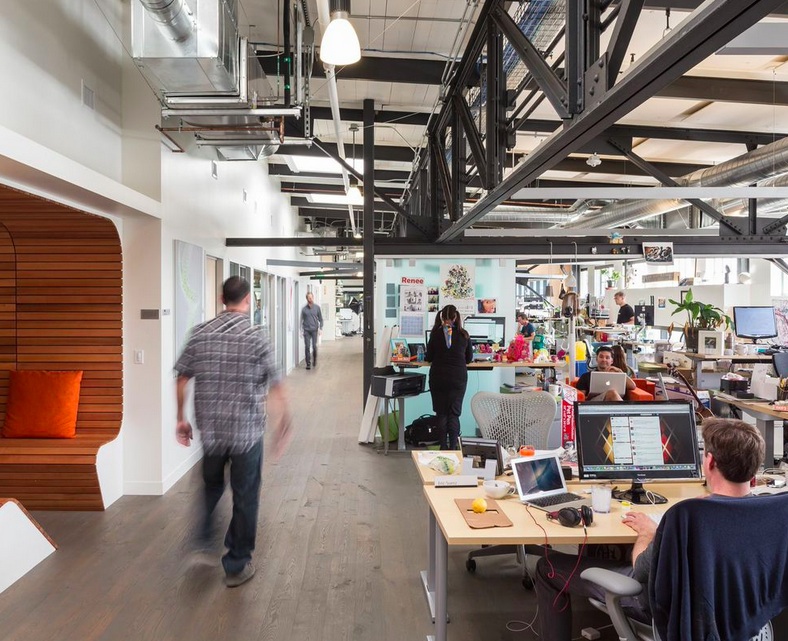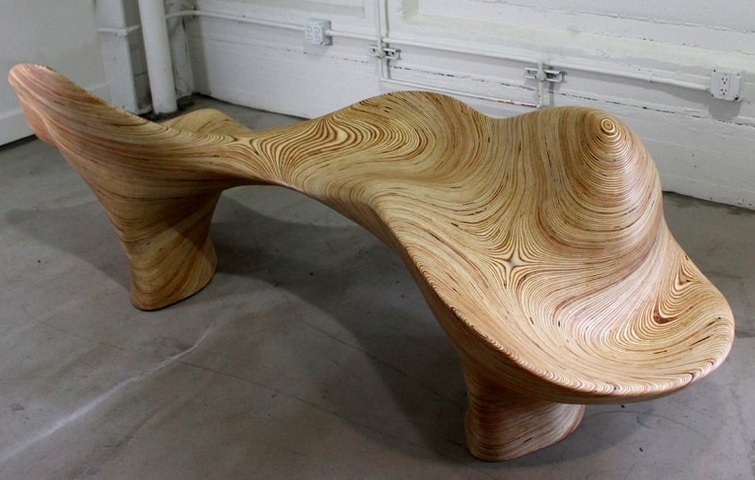 Fler och fler företag runt om i världen luckrar idag upp gränserna mellan vad som är företaget och resten av världen genom nya former av samarbeten och projekts. Ett exempel är mjukvaruföretaget Autodesk med sitt Artists In Residence-program Pier 9 i San Francisco. Vem som helst med en produkt-idé och en vilja att omsätta idén i praktiken kan söka en plats på programmet. Deltagarna får under 4 månader tillgång till toppmoderna verkstäder med den allra senaste produktionstekniken och dessutom hjälp av facilitatorer genom processen. Men hur fungerar det i praktiken? Och vad får Autodesk ut av det?
Fler och fler företag runt om i världen luckrar idag upp gränserna mellan vad som är företaget och resten av världen genom nya former av samarbeten och projekts. Ett exempel är mjukvaruföretaget Autodesk med sitt Artists In Residence-program Pier 9 i San Francisco. Vem som helst med en produkt-idé och en vilja att omsätta idén i praktiken kan söka en plats på programmet. Deltagarna får under 4 månader tillgång till toppmoderna verkstäder med den allra senaste produktionstekniken och dessutom hjälp av facilitatorer genom processen. Men hur fungerar det i praktiken? Och vad får Autodesk ut av det?
Vi tog en pratstund med Mary Hope McQuiston, senior director, Autodesk Consumer & 3D printing och Noah Weinstein, senior manager, Autodesk Creative Programs, och pratade 3D-printing, co-working och konsten att välja deltagare.
Why did you start Pier 9?
MHQ: The opening of the Autodesk Workshop at Pier 9 in September 2013 signaled a number of things for Autodesk. First, it helped us expand our presence in San Francisco to be able to attract the right people to come work with us. Second, the workshop helps inspire our employees to make something and start experimenting-we even developed Ember, our own 3D printer, at the workshop. Last and certainly not least, the workshop houses a wide range of production ready machines that allows our developers to bridge the gap between software and hardware. For example, the Autodesk 123D development team, the brains behind free 3D modeling software like 123D Catch, can easily test our new features on any number of 3D printers within 20 feet of their desks. We’re now able to push the limits of our technology even quicker.
How do you pick among the applicants? What are you looking for?
NW: We are fortunate to receive many more applicants than we have room for in the residency program. We have an open application posted on our website for two cohorts each year and meet with as many of the applicants in person, or over Skype as we can. We emphasize ideas and skills versus academic or institutional accomplishments, and look for folks who have experience using the unique tools and software in our workshop. We try our best to select a group of artists who are asking questions that will help move our understanding of the new technologies available for making things forward, and that want to participate in a collaborative and creative community in order to do so.
How does it work?
NW: The beginning of the residency is filled with intensive trainings, workshops and social gatherings. There are weekly show and tell meetings where we share our progress and goals, as well as critique sessions where artists engage with peers and guest critics in order to explore and develop their ideas. Collaborations are encouraged and artists influence each other’s work so that every group creates their own unique creative environment; change in their creative process and artistic practice is inevitable.
The program also contains events of various sorts. Could you give just a brief example of such an event?
NW: Social events can fuel ideas and collaborations in a less conventional way than being in the workshop and office spaces together. We are lucky to benefit from meals and snacks created by the residents who cook for the cohort in our test kitchen, and many of the events are organized by the artists in residence themselves. Over the course of the residency, there is a PechaKucha night where both program staff and artists share slides of their previous work with the entire Pier, bonfires on the beach where we can sip a beer and dig our toes into the sand, community luncheons at the end of the residency where the artists make a formal presentation of their experiences and projects at Pier 9, and finally, an annual show where we convert the workshops and lab spaces into an exhibition hall to share and celebrate the artists work with the public.
Do you have any favorite projects so far?
NW: That’s a trick question, like asking a parent which kid is their favorite child. The projects are merely artifacts of a creative process which we are all developing collaboratively. I don’t have favorite projects in the program, so much as favorite moments and certain qualities of expression that ebb and flow depending on the cohort and staff. Over the months that residents spend with us, there is often a tipping point at which the artists find ways to take the knowledge, creativity and immense resources of the Pier, and shape them through their own practices to form an idea that they are passionate about. The moment when that happens is a time when I crack a wide smile, and watch as the community lurches forward to a new place that none of us could have previously imagined.
What’s in the pipeline for pier 9?
MHQ: We just expanded the workshop to include a robotics lab, increasing our capability for research and development. We’ve also begun incubating a few startups at the Pier, giving designers and entrepreneurs access to our workshop to help their prototyping and design process. Earlier this year we invited Bolt, a venture capital fund that provides product expertise alongside the capital investment to startups working at the intersection of hardware and software, to co-work at the Pier to gain more hands-on experience with the machinery and expertise we have at the workshop.
But looking beyond San Francisco, Autodesk is expanding the concept of the workshop to our other global offices. In March we opened a 3D Printing Workshop at our office in Tel Aviv, Israel. Israel is an important hub of innovation for our 3D printing innovation, particularly for Spark, our open 3D printing platform. The Tel Aviv 3D Printing Workshop creates a space for Spark partners to experiment and test the software, while allowing researchers to identify disruptive technologies and develop innovative hardware and software solutions in the field of digital manufacturing. Our applied research approach enables new workflows and integrations, from concepts to technology transfer in Autodesk Products.
Vi på Realize har lång erfarenhet att arbeta med företags kreativa utmaningar och har i vårt nätverk de resurser som behövs för att ta er hela vägen från idé till komplett prototyp. Ni startar med en dag hos oss i Idéfabriken där ni har tillgång till 400 m2 dedikerade till en kreativa processen, effektiva kreativa verktyg och metoder och även tillgång till två av Sveriges mest erfarna kreativitetsfacilitatorer. Beroende på hur ert projekt ser ut väljer vi gemensamt partner för nästa steg i processen; prototyptillverkning, testbed för er lösning etc. Ring oss nu på 031-7605400 eller maila, så berättar vi mer om vad vi kan göra för ert företag.
